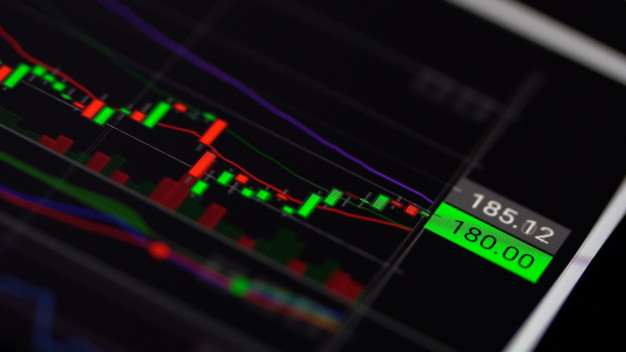How To Read Stock Charts: Enumerated guide
5 Mins Read
Published on: 24 February 2020
Last Updated on: 13 November 2024

toc impalement
What is the stock charts? How does it work? How to invest in it? Why it is confusing to go through stock charts? Is there an easy way to understand it? How to read stock charts? Even I used to ask questions like this when I first started reading stock charts. It is an intimidating experience for everyone who is going through the stock chart. But with a little bit of knowledge and practice, you will be able to find winning stocks and the right time to sell the stocks.
You need to understand that the stock charts tell you stories. Each and every ups and downs in the stock market are shown in the chart. Who is investing? Who is buying the mutual funds? How big the investor is? How big the company is? Each and everything is shown in the chart. You can see all the things going is moving like a story. All the ever-changing events in the stock market are recorded in the chart. So, you can understand now that if you are investing in the share market without taking the help of these charts. It is just like cooking blindfolded. Therefore it is very important to have an expert with whom you can consult in times of need.
How To Read Stock Charts
We all know that the stock chart graph, bar graph, points, candlesticks graph are all used in making stock charts. In this article, we will go through each and every aspect of the graph and their terms which are used in the charts, and I will tell you the effective way to how to read stock charts.
1. Price and volume
Investor’s business daily (IBD) charts are divided into two charts, price and volume. It is essential to have sight on both the price and the volume of the shared bought. If you only look at the price without seeing how many of the shares are bought. This can be a setback as you won’t be able to see how serious the shares are in the market. In other words, you will be bidding om shares blindfolding.

For example, if the stocks fall down by 2% then you can get nervous, but if the volume of the stocks is far below the average then, it means that there is a big investor who is sitting tight not selling anything. This is a sign that you should also do the same.
On the other hand, if you see a rise in the stocks with a lesser volume that it is a fake head start which is done by a big investor to show that they are aggressively buying the shares (which just to create a rush in the market). This is the reason why you should see the price as well as the volume.
2. Moving average lines
The moving average lines are the price movements that go up and down with the time period. It is very important to follow this line because it shows how big investors working with their shares. Reading the lines is the first step towards ” How to read stock charts”.
Only the big heads in the share market have the power to change the average line into a steeper uphill or downfall. If there is a huge change on the line, signifies that there is a big investor working in the share market right now. Therefore, it is very important to follow the moving average lines, to make the right decision.

But you have to make sure that stock finds support at the key moving average like 10 weeks or 50 days line. When the stock falls below that line, that means some of the big players have sold most of the shares.
So, it is important to have a constant eye on your shares and how they are moving. Also, keep an eye on the big investors as well, which will help you to decide when to sell and buy new shares.
3. Relative strength line
This line help to compares the position of the stocks you are holding. For instance, if you want you can use the Relative Strength (RS) line to check your relative strength score. This compares the stock price performance with the S&P 500.

Sharp growth in the RS line tells you that it is outperforming in the stock market. And then a steep slope symbolizes that your stock is lagging behind in the stock market. When the stock is reaching its potential breaking point, look for the RS line to be rising and approaching or in the new-high ground. Such action is a bullish sign of market leadership as a stock tries to launch a new run.
4. Weekly stock charts
The weekly chart holds the record of all the weekly changes that have been gone through in the stock market.

- It is a 10-week moving average
- It also shows the 40 weeks moving average
- Weekly stock charts show the relative strength line that compares the performance of the stocks with the S&P 500.
- The volume bar shows the number of trades done each day.
- The horizontal red line shows the volume of the past 10 weeks.
- Stocks are also shown which gets support from the key benchmark.
- Lines moving sharply shows that the stocks are outperforming in the market.
5. Daily stock charts
In the daily stock charts, whatever changes which are going on a daily basis are shown.

- It shows a 50-day moving average.
- It shows a 200-day moving average.
- The relative strength is shown on the daily stocks which compare the performance of the stock with the S&P 500.
- The horizontal red line shows the volume of the past 10 weeks.
- Stocks are also shown which gets support from the key benchmark.
- Lines moving sharply shows that the stocks are outperforming in the market.
Which chart is best to use: weekly charts vs daily chart
It’s totally up to you which chart you are going to use. Both charts have their advantages over each other. Both charts will help you to how to read stock charts in an efficient way.
Weekly charts are very helpful to give a longer-term on the stocks and the trends. In addition, it makes the daily fluctuation look easy. This can help you to understand the chart very well if you are a long-term investor.
On the other hand, the daily chart gives you a valuable look at the price and the volume of the stocks which are being circulated in the market. It gives you specific details of the sticks at any given sensitive time of the day. In this chart, it always gives you current information and suggests to you what action is required right now at this moment.
Conclusion
Once you under the basics of the stock charts, it becomes easier to understand the details and the working of the stock markets. Everything seems to be hard if you lack knowledge. However, in this article, I have tried to make you understand in the simplest way possible how to read stock charts. So that it won’t be difficult for you, the next time you read a stock chart.
Read also:


















Comments Are Closed For This Article